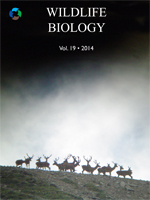Countries that allow sport hunting of African lions, Panthera leo, increasingly are mandating minimum age regulations for harvested individuals that require accurate aging techniques. However, individual variation in dental characteristics used for aging could result in errors and has not been quantified. We assessed individual variation in three dental methods for estimating age of lions using left and right paired PM2s from 31 free-ranging lions of unknown age from Zambia. Assignment of individuals to age class based on crown wear was largely consistent (87%) between paired PM2s; measures of pulp chamber closure also were highly consistent (< 4% variation) between pairs. Though pulp chamber closure varied little between pairs, calibrating pulp closure with known-aged lions is needed to fully develop this method. In contrast, cementum line counts differed between paired PM2s in 94% of lions, ranging from 1 to 7 cementum lines (i.e. 0.5–3.5 years). Of lions with cementum lion counts that differed between teeth, 45% were estimated as meeting the 5- or 6-year-old minimum age used in trophy lion monitoring programs with one PM2, but not the paired PM2. Though individual variation in cementum line counts may render this technique unsuitable for aging lions, using the maximum or average count from both PM2s warrants further investigation. Individual variation in dental characteristics should be considered when developing lion aging techniques based on dentition.
How to translate text using browser tools
1 May 2016
Individual variation in dental characteristics for estimating age of African lions
Paula A. White,
Jerrold L. Belant





